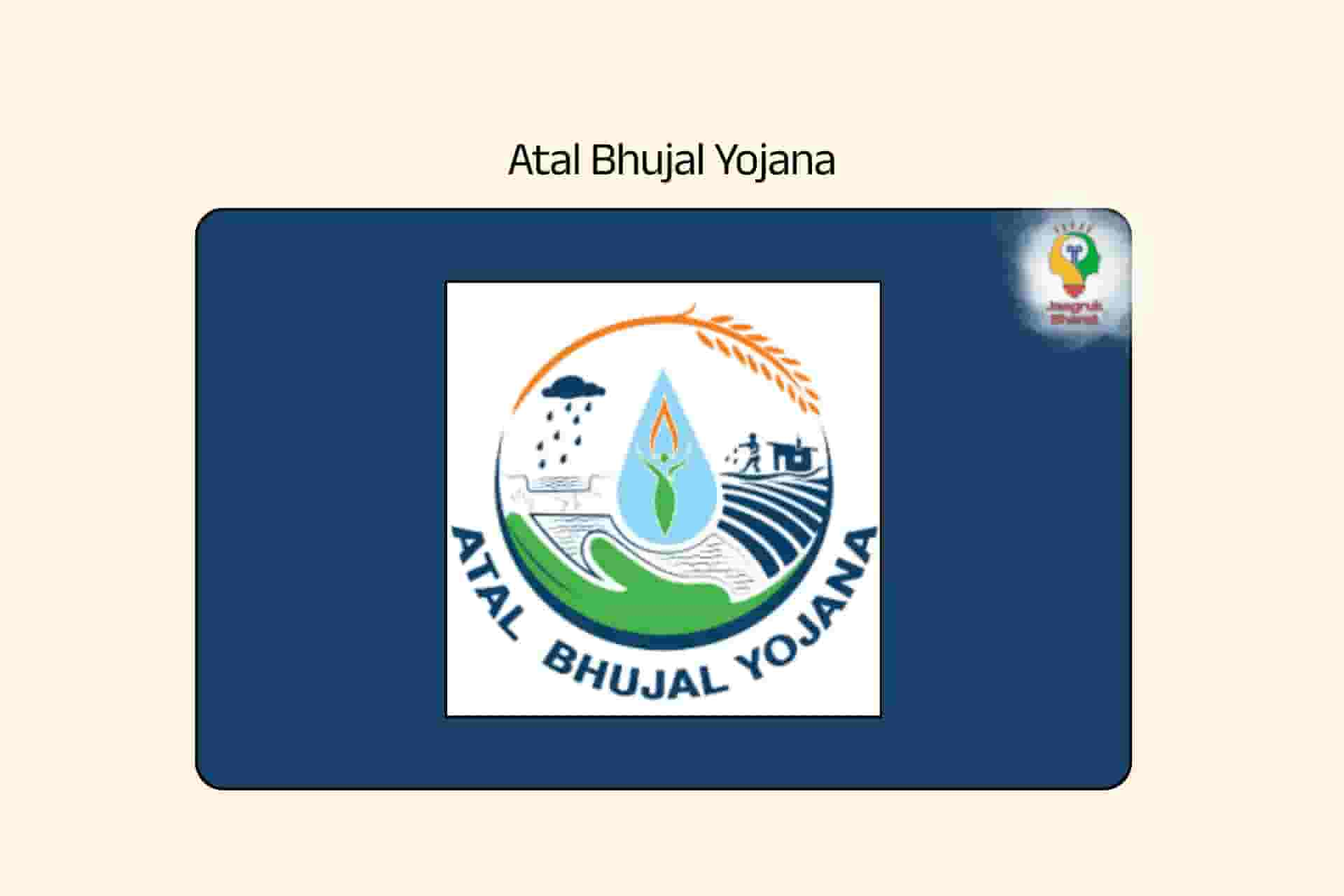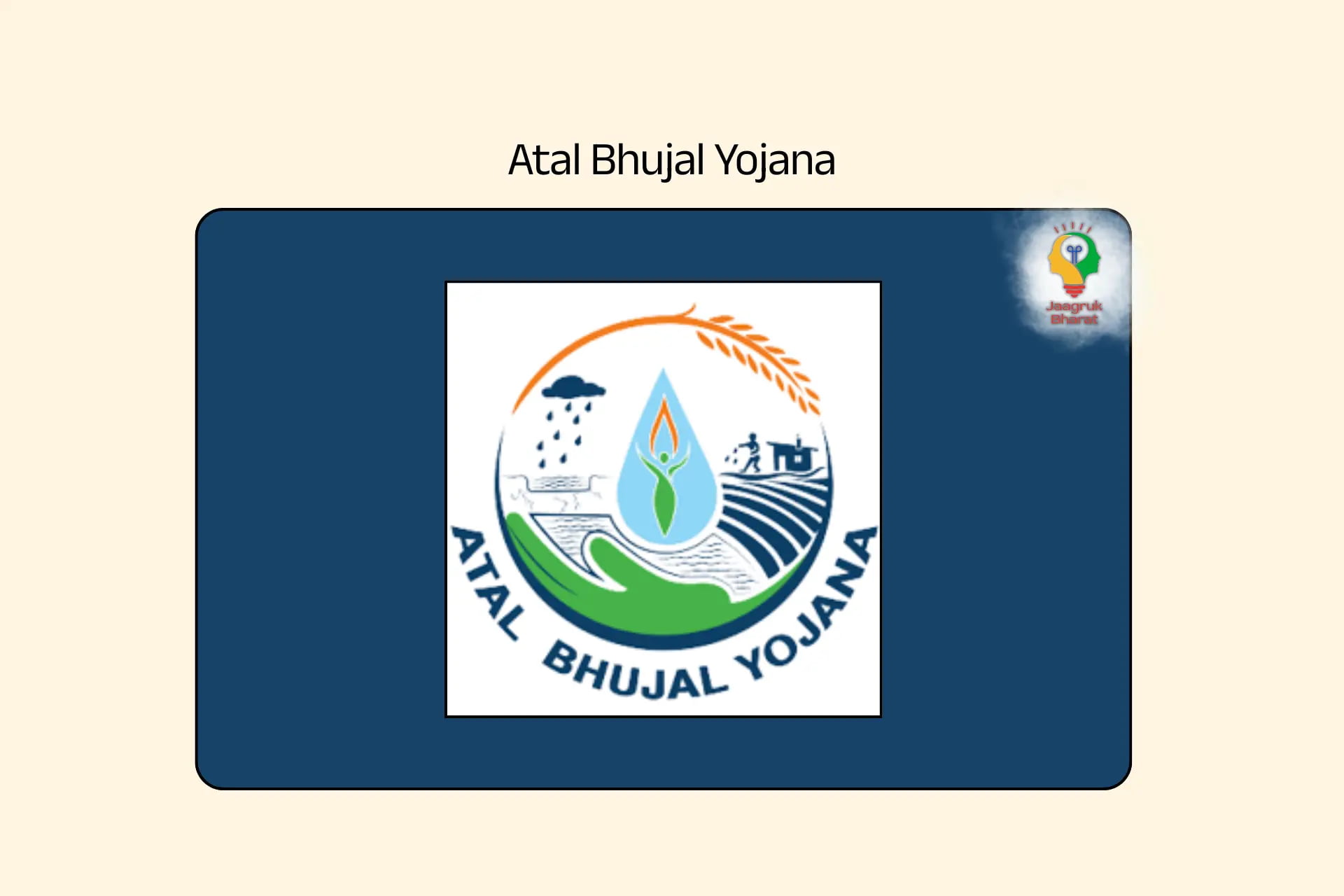Atal Bhujal Yojana Explained: The Groundwater Revolution India Needs
Updated: 23-09-2025 at 3:30 PM
1k


Water insecurity and groundwater depletion pose significant threats to India's future, particularly for rural and agricultural communities. To address this issue, the Central Government has initiated the Atal Bhujal Yojana as a pilot program for participative and sustainable management across regions. The Sarkari scheme is based on a foundation of policy and science and worked to bring local communities, state agencies, and line departments together to regenerate aquifers, improve water-use efficiency, and foster strong institutions to manage resources in the long term.
This article will broadly unpack the Atal Bhujal Yojana in detail, outlining the launch date, structure, goals, funding, scope, implementation, coverage, and tangible impact. You will also understand why groundwater-related problems continue in India, how ABY aims to address them, and what makes the scheme either successful or problematic concerning Rajasthan, Madhya Pradesh, and options for online civic engagement or education.
Overview
A summary provides a basic overview of the important elements before delving more fully.
| Aspect | Details |
|---|---|
| Scheme Name | Atal Bhujal Yojana (ABY) |
| Launched On | 25 Dec 2019, on Atal Bihari Vajpayee’s birth anniversary |
| Type | Central sector (Community-driven groundwater management) |
| Funding | Total ₹6,000 crore: ₹3,000 crore each from GoI and World Bank |
| States Covered | Gujarat, Haryana, Karnataka, Madhya Pradesh, Maharashtra, Rajasthan, Uttar Pradesh |
| Coverage | 8,203 Gram Panchayats in 229 blocks, across 80 districts |
| Timeline | April 2020 to March 2025 (extendable) |
| Focus Areas | Water security plans, recharge structures, water budgeting, and community capacity |
What Is Atal Bhujal Yojana?
This program is designed to support watershed and groundwater management, particularly in water-stressed areas, through a community and regional-scale, locally driven approach. It allows for Grama Panchayat and community involvement in monitoring groundwater levels; developing a Water Security Plan (WSP); designing, developing and funding a recharge structure (such as a johad, pond or check-dam); improving efficiency in demand-side or local water-use efficiency; and coordinating central and state agency involvement.
Objectives Of The Atal Bhujal Yojana
To appreciate the purpose of the ABY, the work's objectives can be simply laid out as follows:
-
To reverse the decline of, or stabilise, groundwater through participatory demand-side management of a local resource.
-
To strengthen institutional/management capacity at the Grama Panchayat and community level.
-
To promote water security through deliberative, budgeted, local planning and implementation interventions.
-
To reinstate "hybrid" or traditional recharge structures and bring about more efficient irrigation.
-
To enhance data transparency and accountability at a local level through the use of management information systems (MIS) and community-reported data.
Funding of the scheme
The ABY programme is mobilising ₹6,000 crore throughout the project - from the Government of India and the World Bank on equal terms, as a loan to the GoI on the "Program for Results" model. The fund will be allocated through grants to states based on performance criteria related to WSPs, water data disclosures and actions taken related to recharge. The fund is fluid, meaning that unspent allocations can be reapportioned to states that perform better than the average.
Scope of Atal Bhujal Yojana
India’s fight against groundwater depletion has seen significant progress through targeted conservation efforts. From infrastructure development to community training, each step plays a vital role. The highlights below reveal the scale and impact of these initiatives.
-
Developing strong local organisations for groundwater governance.
-
Developing infrastructure for natural recharge and conservation.
-
Encouraging responsible water use and crop diversification.
-
Encouraging community awareness and behaviour change through Gram Sabha-led planning and gender-informed processes.
-
Promoting a grassroots approach by not including major dam projects or industrial-scale water infrastructure.
India’s Groundwater Problem
Groundwater is used for 70% of water used for rural purposes, but over-extraction has occurred where the extraction of groundwater exceeds recharge of groundwater, creating "dark zones" and precarious depletion. India is the world's largest user of groundwater, and unsustainable practices are threats to food security, rural livelihoods and urban water supply, demanding immediate collective action.
What are the Major Causes of Groundwater Depletion in India?
Here are some of the main drivers of India's groundwater decline:
-
Exceeding agricultural extraction (80% of water use, where inefficient irrigation methods are common), Urbanisation, which is further depleting aquifers (promotion of high domestic and industrial demand).
-
Irregular climate patterns (droughts, changed patterns in rainfall have negatively affected natural recharge.
Deforestation/land degradation Reduces Groundwater Percolation.
Here are some of the main drivers of India’s groundwater depletion:
-
Over-extraction for agriculture (80% of water use; often inefficient irrigation practices).
-
Urbanisation that depletes aquifers at both domestic and industrial scales (urban areas).
-
Climate fluctuations (such as droughts, changes in rainfall/ recharge amounts).
-
Deforestation and land degradation (reducing the amount of land, trees and plant materials that can percolate water).
What are the Issues Associated with Depleting Ground Water?
Below are some of the primary reasons for groundwater depletion in India:
-
Overextracting for agriculture (80% of water withdrawals; oftentimes, inefficient irrigation is used).
-
Urbanisation, which depletes aquifers at both the domestic and industrial scales (suburban areas).
-
Climatic variability (e.g., drought, differences in rainfall/ recharge amounts).
-
Deforestation and land degradation (decreased area of land, trees and plants which can percolate water).
Scheme Coverage
Before exploring implementation, see the breadth of ABY’s reach. The points below offer a quick idea of how and where it operates.
| Key Point | Details |
|---|---|
| Coverage | 80 districts, 229 blocks, 8,203 Gram Panchayats in 7 states |
| Improvement | 83 of 229 blocks show better groundwater levels |
| Infrastructure | 81,700+ recharge structures built/renovated |
| Water Use | 9 lakh ha under drip irrigation, mulching & other efficient methods |
| Community Efforts | WSPs updated yearly, piezometers & rain gauges in villages |
| Training | 1.25 lakh+ sessions for local water managers |
Conclusion
Atal Bhujal Yojana is one of the few impactful instances in which policy and community action have come together. In ABY communities, the combination of local ownership with technical support has increased water levels in many places, revived traditional recharge techniques - such as johads - and demonstrated that it is possible to practice sustainable groundwater management. Their legacy is more than just the infrastructure, but the sense of community empowerment as they safeguard their water future.
Stay updated with Jaagruk Bharat to get the latest information on government schemes and more, and reach out to us via our community page if you have any questions or want to share your thoughts.
0
0
1k
0
0
1k Views
0
No comments available





Our Company
Home
About
T&C
Privacy Policy
Eula
Disclaimer Policy
Code of Ethics
Contact Us
Cancellation & Refund Policy
Categories
Women
Insurance
Finance
Tax
Travel
Transport & Infrastructure
Food
Entertainment
Communication
Government ID Cards
E-commerce
Traffic guidelines
Miscellaneous
Housing and Sanitation
Sports
Startup
Environment and Safety
Education
Agriculture
Social cause
Employment
Disclaimer: Jaagruk Bharat is a private organization offering support for documentation and government scheme access. We are not affiliated with any government body. Official services are available on respective government portals. Our goal is to make processes easier and more accessible for citizens.
All Copyrights are reserved by Jaagruk Bharat